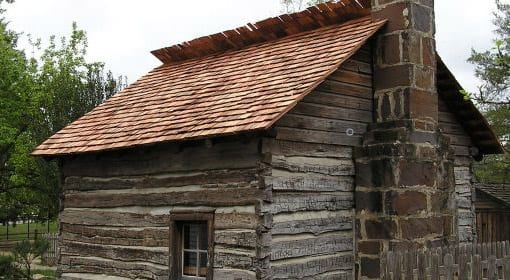Historic buildings are treasures, and part of that charm lies in the classic design of their roofs. One challenge that faces many owners of these beautiful structures is preserving historic roofs. Not only does this keep our cultural heritage alive, but it also ensures these buildings remain structurally sound for future generations to admire.
Understanding Historic Roofs
Often, we see roofs as practical necessities, providing shelter and protection. But for historic buildings, the roof represents so much more. They are the crowning glory of a building, showcasing the architectural flair and ingenuity of the past. From the towering steeples of churches to the sweeping curves of thatched cottages, the varied designs of historic roofs serve as tangible evidence of our architectural heritage.
Historic restoration isn’t just about maintaining a structure; it’s about safeguarding a piece of our shared history. The roof’s original materials, slate, clay, wood, or metal, are a testament to the craftsmanship and resources of bygone eras. And it’s not just about aesthetics – these roofs were designed to be functional, often crafted with ingenious techniques to withstand the local climate and conditions.
Preserving historic roofs is about keeping these narratives alive, preserving these authentic materials, and maintaining their structural integrity. When we work towards safeguarding historic roofs, we’re not just repairing a building – we’re contributing to the ongoing story of our cultural and architectural history.
The Challenges in Preserving Historic Roofs
Restoring and preserving historic roofs is a complex process, posing numerous challenges and requiring expert attention. One of the first hurdles is the impact of weathering. Roofs take the punishment of adverse weather conditions, with hail damage being a significant problem. Over time, hail can cause considerable deterioration, breaking tiles, or causing leaks, threatening the very essence of these historic structures.
Another critical challenge to preserving historic roofs is water damage. The roofs of historic buildings were designed in an era when modern waterproofing technologies were unavailable. Over time, rain and snow can cause significant water damage, leading to potential rot or structural issues.
Apart from weather-related issues, general wear and tear over time can cause the materials used in these roofs to deteriorate. Many historic buildings were constructed using materials that may now be scarce or unavailable. This raises the complexity of the preservation process, as sourcing suitable replacement materials becomes part of the puzzle in preserving historic roofs.
Insects and pests can also present challenges in preserving historic roofs. If unchecked, they can cause significant damage, particularly to wooden structures, which may require extensive repairs or roof replacement.
The most substantial factor, however, is the roof’s age itself. Over time, even the sturdiest materials succumb to the inevitable process of aging. This can lead to structural instability and a need for extensive repair work to prevent any potential safety hazards.
Despite these hurdles, preserving historic roofs is a worthy cause. Not only do these roofs serve as a testament to our architectural past, but they also add unique character to our cities and neighborhoods. It is critical to remember that preserving these roofs is about more than just maintaining a structure; it is about saving our heritage for future generations to appreciate.

Detailed Steps in Preserving Historic Roofs
Preserving historic roofs requires passion and expertise, accompanied by a strategic process. Here’s a more detailed breakdown of the preservation steps for historic roofs.
1. Assessment
The first step in preserving historic roofs is a comprehensive evaluation. It’s not just about looking for visible damage. Specialists should examine the roof for signs of deterioration that may not be immediately apparent.
This includes identifying areas prone to water leaks, signs of hail damage, or issues with the radiant barrier. An infrared survey could be utilized to discover wet insulation underneath a roofing membrane. These evaluations help determine the necessary preservation work—simple repairs or more intensive restorations.
2. Planning
Based on the assessment, a detailed plan is created. This plan will consider the building’s historical significance, current condition, and specific challenges, like potential hail damage or leaks. The aim is to find a solution that respects the original design while ensuring the roof’s longevity and functionality.
3. Execution
After finalizing the plan, the actual preservation work begins. At this stage, a trusted roofing contractor company can make a difference.
Professionals are trained in the delicate art of preserving historic roofs. They know how to repair or replace a roof without compromising its historical integrity. They’re skilled at balancing aesthetic charm with structural stability.
4. Maintenance
The preservation of historic roofs doesn’t stop once the repair or restoration work is completed. Regular maintenance is essential to keeping the roof in good shape. This involves cleaning the roof surface to prevent the accumulation of debris and inspecting the roof regularly to catch any potential issues early. Regular maintenance also extends to monitoring the roof after extreme weather events to address any resulting damage quickly.
Case Study: Successful Projects in Preserving Historic Roofs
Showcasing the beauty and feasibility of preserving historic roofs has led to numerous successful projects worldwide. For instance, let’s look at the ‘Old Town Hall’ project.
Here, keeping the historic roof involved by thoroughly evaluating the roof’s condition, followed by meticulous planning. The execution stage saw replacing original roof tiles with identical replicas, maintaining the aesthetic while ensuring structural integrity.
The project is an ongoing commitment, with regular maintenance checks scheduled to monitor the roof’s condition. This case study demonstrates that while challenging, preserving historic roofs is achievable with careful planning, execution, and maintenance.
How Summit Roof Service Inc. Helps in Preserving Historic Roofs
When it comes to preserving historic roofs, you need a trusted partner. Summit Roof Service Inc. has an excellent track record in roof repairs and replacements. Our expertise in handling various roofing issues has assisted countless homeowners and businesses in preserving historic roofs. We don’t just fix problems; we ensure your roof’s historic character remains intact, blending modern roofing techniques with traditional craftsmanship.
Takeaway
Preserving historic roofs is more than a preservation effort – it’s a commitment to our past. It allows us to appreciate the rich architectural designs and methods used centuries ago. Whether you need a roof repair or a complete replacement, preserving historic roofs should be done carefully and precisely.
Summit Roof Service Inc. is just one call away if you need assistance. Contact our Allen (972) 715-1655 or Grapevine (972) 484-7774 branches, and let us help you keep our heritage alive. Visit our social media for more details.
You can visit our blog for more information about roof repair and related articles.
Read:
The Cost of Ignoring Roof Repair: Why It’s Important to Act Fast
The Guide to Full Roof Replacement Cost: What You Need to Know
